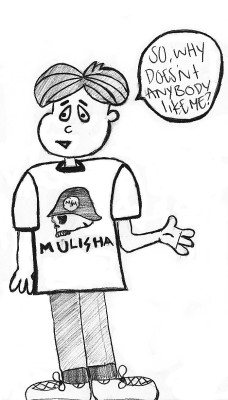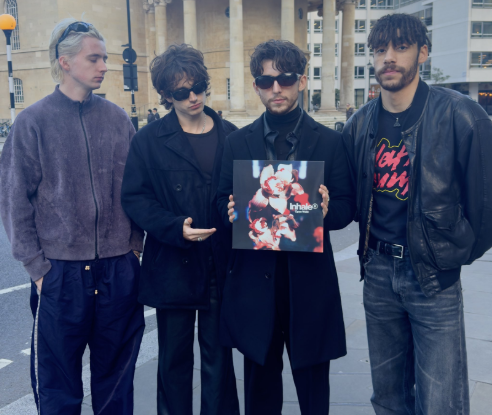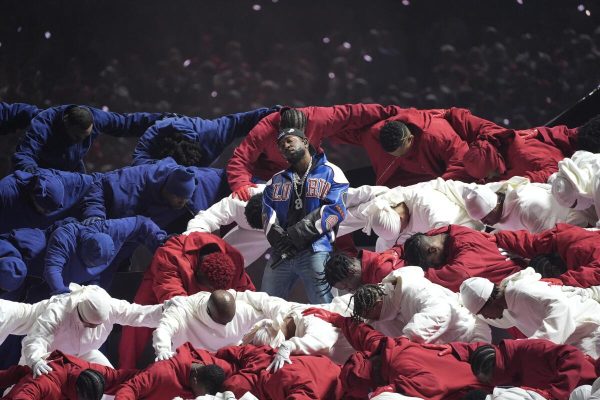Metal Mulisha Banning Becomes Popular
What is the world we live in where Nazi anti-Semitic symbols have integrated themselves into popular culture?
The freestyle motocross team known as Metal Mulisha has multiple symbols integrated into their clothing line that are incredibly similar to WW II Nazi anti-Semitic propaganda. While the most commonly known of the Nazi symbols is the swastika, there are multiple other less conspicuous hate symbols out there. It is these lesser-known images that are causing so much trouble.
In initially hearing about the racist message the brand was supposedly sending.
I just shrugged it off as adults trying excessively hard to be punk rock teenagers again and get a rise out of the public.
However, hearing science teacher Marcus Sherman argue so ardently about the racist nature of the images, I decided to do some research of my own.
Metal Mulisha apparel bears images that look strikingly like the Totenkopf, or Death man’s Head, which was used mainly by Schutzstaffel, Germany’s infamous secret police, in Third Reich Germany.
There is the specifically stylized “SS” which was an abbreviation for Schutzstaffel.
However, the most similar image on MM clothing is the shape of the helmets that the skull is commonly wearing, which look almost exactly like Third Reich combat helmets.
While some may argue that the images are not at all related to Nazi discrimination, there is a definite likeness in multiple symbols.
After seeing the congruence between the brand and the hate symbols, I became somewhat offended.
While I am not Jewish myself, these images were used to convince people that murdering 6 million other human beings was fine, and that’s just not right.
Any kind of hate symbol should be offensive to anyone, and when they are obvious and purposely put somewhere, it’s exponentially more repulsive.
Even though students may not recognize the racist nature of these images, Sherman acts with a vicious sort of determination.
He already has plans of speaking to Principal Bill Parks to ban the brand, after the principal he plans to go to Leadership, and possibly even the district.
“We supposedly crack down on kids wearing profanity, or colors, but, oh, it’s okay if we have symbols that represent the mass murdering of 6 million people,” Sherman said.
These symbols have no physical way of hurting anyone, let alone me, the one writing this column.
However, what these images do can be far more bothersome than physical hurt.
These images unnerve me to no end.
Honestly, how can someone walk around all day wearing anti-Semitic images all over their clothes?
Also, how can they walk around not knowing what the symbols are derived from?
In the wise words of Sherman,
“Every hillbilly on earth has it on their truck, and just because they don’t know what it means that doesn’t make it okay.”
The clothes and images themselves may not be the root of the problem.
The designers and supporters of Metal Mulisha are to blame for all this hate-infused imagery.
Some districts in California have placed a ban on the clothing that bears this imagery, and have received threats of lawsuits from the brands’ attorneys.
Now, if one is being honest, placing a ban on the clothes isn’t going to stop people from buying the clothing.
A ban will not stop people from supporting the brand, and liking the people that represent the brand.
A ban does not force people to relinquish their clothing, or whatever happens to be banned.
A ban stands to keep racist and possibly hurtful messages off campus.
The whole feel of this Mulisha crew is reminiscent of the angry-at-the-world, parent-defying teenager.
But these pissed-off adolescent types are not the ones who should be in charge of the logos that litter our campus.










Michelle • Sep 8, 2017 at 9:19 am
This is a crock!!! I’m thirty years old and I absolutely love skulls so I prefer this brand of clothing because gothic is too much for me and to take away the product disgusts me as we now live in a country of big overgrown whine asses who are easily Butthurt over everything as for kids sure ban them if you want but as an ADULT i should be able to purchase the clothing at MY convenience but whatever I’ll just give my money to Harley Davidson instead….morons
Erik • Feb 12, 2016 at 3:24 am
so we must ban all skull and bones images, from what i gathered. you know. motorcycle helmets used to and still do look like MM logo helmets. and a skull well seeing how most skulls look the same cause. once again you know….. its a skull. Only so many ways a skull can be drawn out. So anyone finding offense to their logos seriously need to stop. Bottom line there isnt anything to be offended by yall just decided its time to ban another thing. in what is supposed to be a free speech country